Database Scalability — Focusing on Replication & Partition
Author: @Hsu Tzu Ting Date: Dec 3, 2020 Tags: 延伸閱讀 性質: Tech Share
Why this topic?
- 在 roadmap 上找到
- 發現之前有 sharing 過一部分的概念 (Relational Database vs NoSQL Database)
Intro (引言???)
- 使用者越來越多、資料越來越多
- 硬體升級
升級到不能升級
- 新的資料庫

- 硬體升級
Scalability
有些小問題一變大就不簡單了
Scalability 討論的就是系統應對問題大小的能力
憑什麼說 Database A 比 Database B 更 scalable?
- Performance
- 白話文:回應速度很快
- 具體來說
- 可以同時處理很多 tasks (High throughput)
- 使用少量的計算資源
- 直觀嗎 → Trade-off
- 同時處理多個 tasks 可能導致使用大量計算資源
- (還沒想到example支援)
- Availability
- User 能夠 access 系統
- 可以量化:uptime / (uptime + downtime)
- Performance
How to improve the scalability?

Replication
- 一份資料,複製多份放到不同的 node 上面
- Why improve scalability?
- Performance:更多的計算資源還有頻寬 (High throughput)
- Availability:可以在多個 node 得到 data,自然就不容易 inaccessible
- 其他優點:To have the data (geographically) close to the clients
- 分類
- Timing of data transfer
Asynchronous replication (非同步)

- master 跟 client 說收到 data 後,才開始複製 data 到 replicas
- 優缺點
優點:offers ease of use (replications 在背景執行)
缺點:資料遺失的風險較高

Synchronous replication (同步)

- 完成複製 data 到 replicas 後,才回應 client
- 優缺點
- 優點:比較能保證資料有成功複製到其他 database
- 缺點:client 需等待較久
- Server architecture
- Roles
- Leaders / Masters
- Nodes that accept writes from clients
- Followers / Slaves / Replicas
- Nodes that provide read-only access to data
- Leaders / Masters
- 分類
Single-leader architecture

- the most common & classic
- A single leader accepts writes
- Replicas draw data from the leader
- 優點
- avoid conflicts
- 缺點 / 問題
- Latency
- ex. query travel the globe before they get a response
- What will happen when the leader node dies?
- Elect a new one?
- automated? operated by somebody?
- (heartbeat system)
- How to define "die"
- Elect a new one?
- Latency
Multi-leader architecture
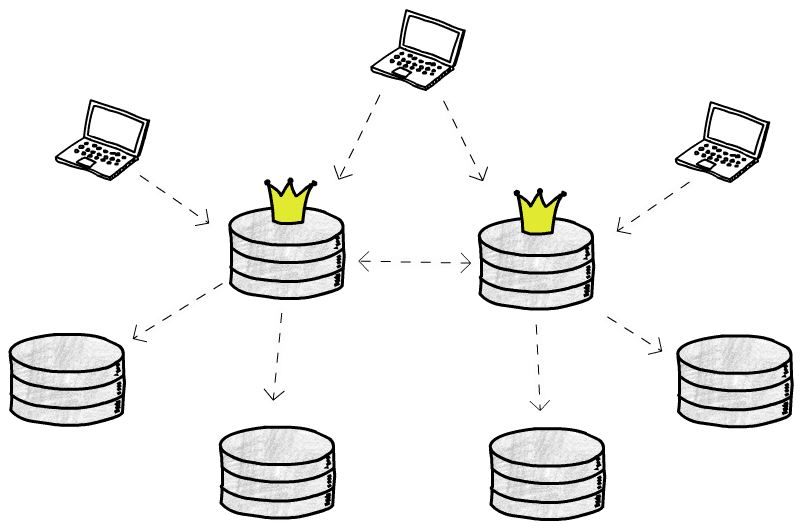
- Multiple servers that can receive writes and serve as a model for replicas.
- 優點
- 在 replicas 很分散的時候,多個 leaders 可以降低延遲
- ex. one in North America, one in Europe and another in Asia
- 在 replicas 很分散的時候,多個 leaders 可以降低延遲
- 缺點
- conflicts happen
- Solution
No-leader architecture
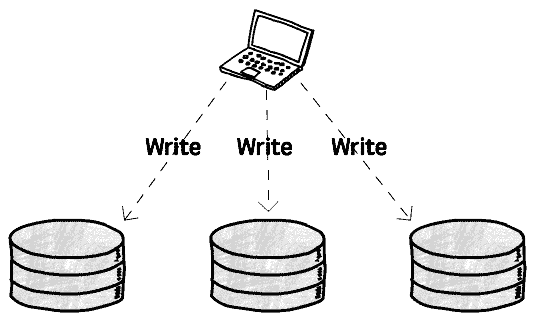
pioneered by Amazon's DynamoDB
no leaders, every replica can accept writes
優點
- 沒有 leaders fail, elect new leaders 的問題
缺點 / 問題
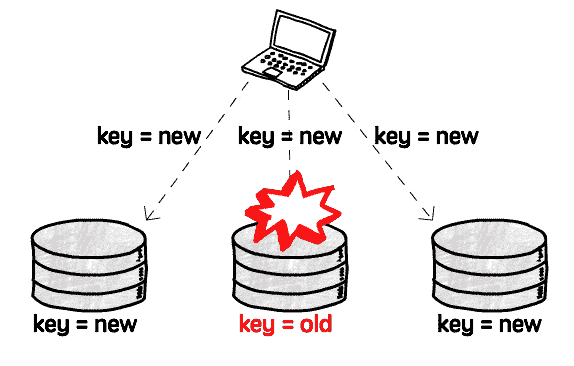
- A possible solution
- 跟 write 一樣,client 也向多個 nodes send request ,然後決定該相信誰
- 解決根本問題:how to synchronize without leader
- 由 client 負責
- another process that is responsible just for finding differences in the data and fixing them
- A possible solution
- Roles
- Timing of data transfer
- 適用情境
- seldom or never-updated data
- Ex. transaction history, tax tables
- Database replication vs. mirroring
- Replication: focus on improving the scalability
- Mirroring: focus on backing up
Partition
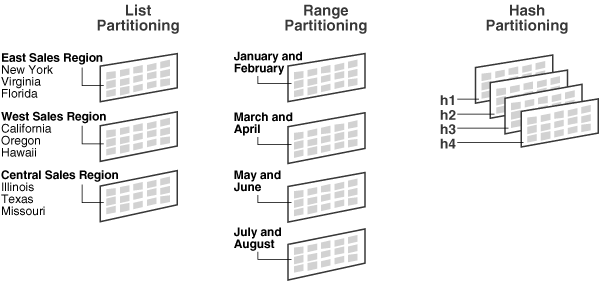
一份資料,切開變成數個小份後,分散的放到不同的 node 上面
Why improve scalability?
- Performance: 相關的資料放在一起 → 搜尋時一次要檢查的資料變少 (less resources)
- Availability: 讓錯誤發生的情形變得更獨立
Strategies
Range partition
- index-organized table
- based on ranges of partition key values
List partition
- you can group and organize unordered and unrelated sets of data
Hash partition (index-organized table)
- 時機
- 不確定在一個 range 中有多少筆資料Y
- 有些 range 有超多筆資料,有些卻很少
- 時機
Composition partition
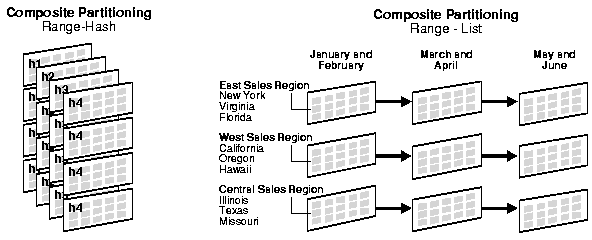
Method
Vertical
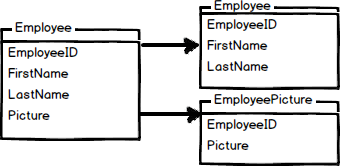
- 不同的 column → 不同的 table (same # of rows, fewer columns)
- 優點:Restrict access to sensitive data
Horizontal
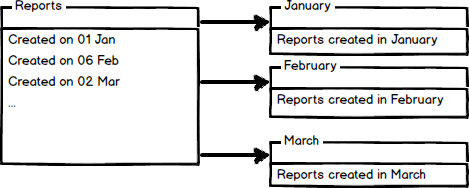
- 不同的 row → 不同的 table (same # of columns, fewer rows)
可以只有 Partitioning 沒有 Replication 嗎?
CAP Theorem
現實:網路會斷線
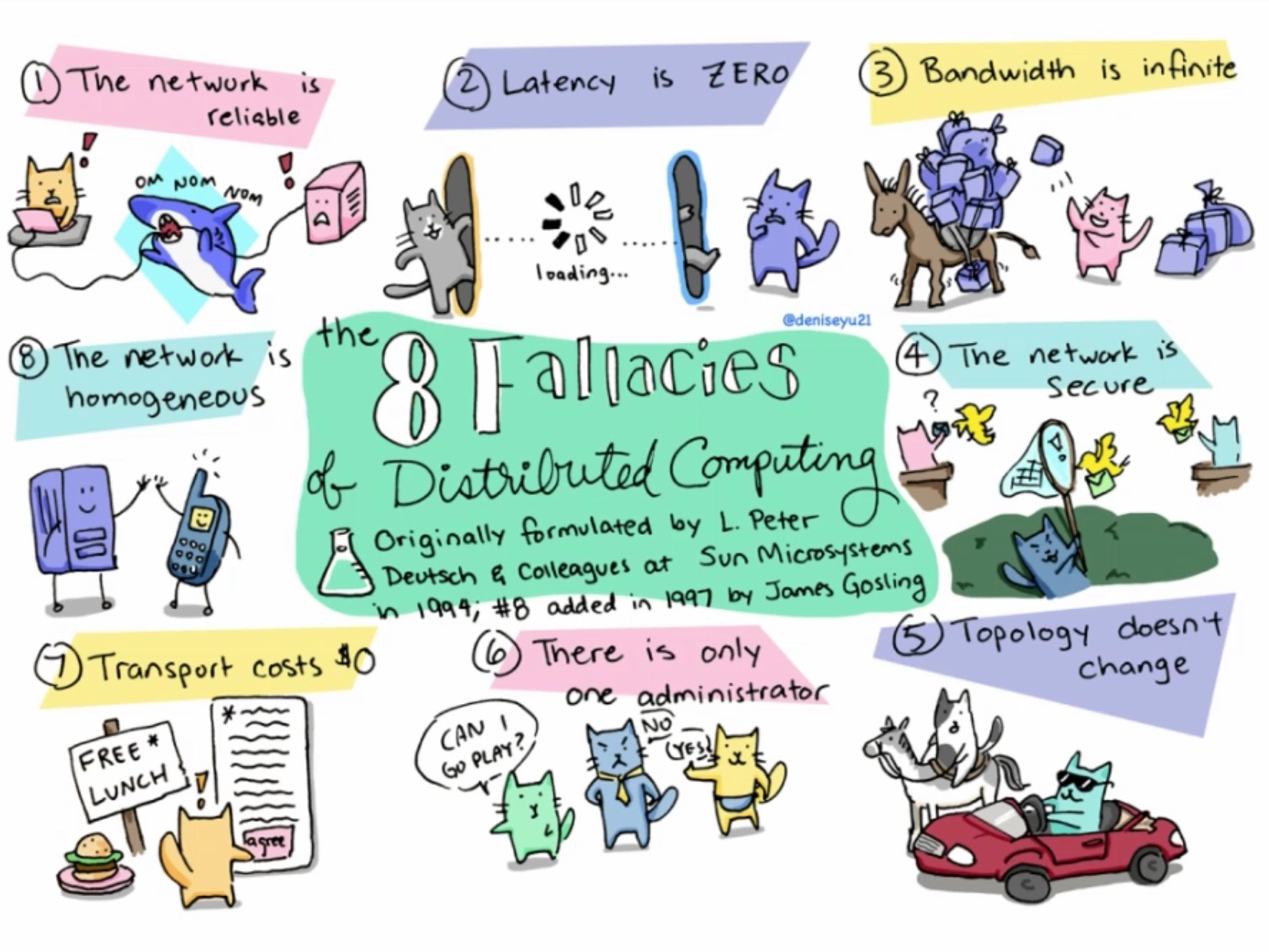
https://rickhw.github.io/2018/06/18/Architecture/Gossip-in-Distributed-Systems/
對象 → read-write storage
- set(X): sets the value of the register to X
- get(): returns the last value set in the register
What's C, A, P stand for?
Consistency(一致性)
使用者讀到的「總是」最新的資料
not consistency 的例子
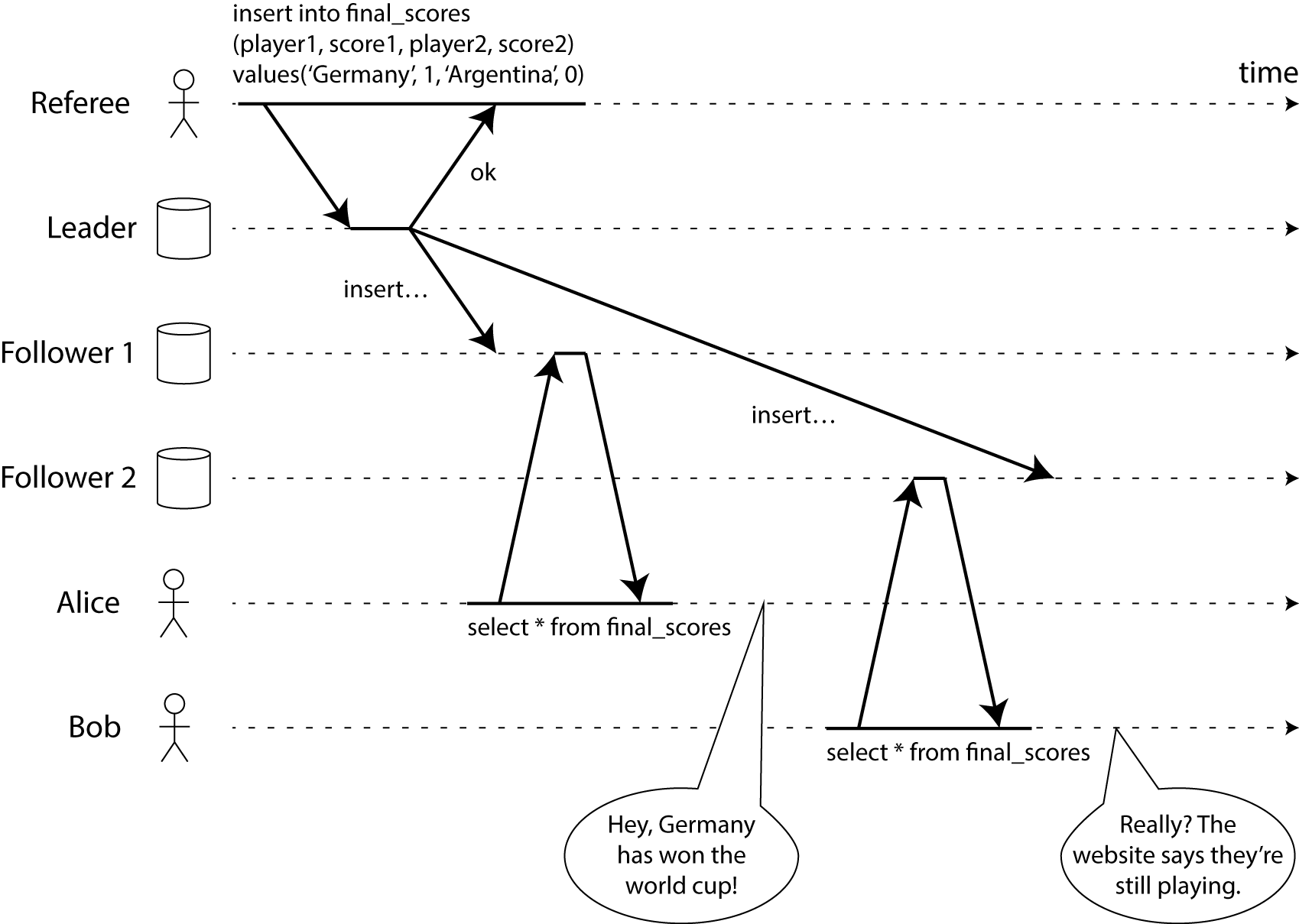
Availability(可用性)
- 使用者的請求「總是」可以獲得回應,也就是可以正常讀寫
- 回應不包括回應 error message
Partition tolerance(分區容錯性)
- 就算網路出現問題導致資料分區,整個系統仍然要可以繼續運作
Core of the Theorem → Trade-off
CA
- 回到單一 database (X)
CP
- 發現無法與另一個資料庫同步,使用者的請求就會失敗
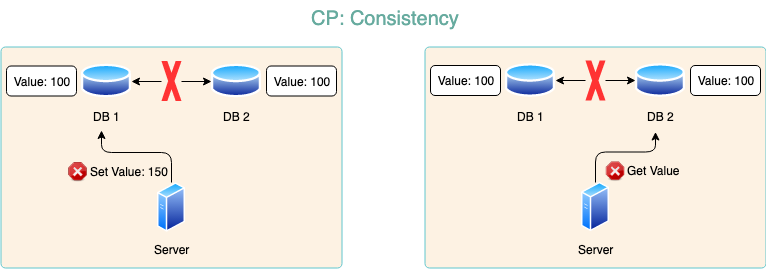
AP
- 雖然資料庫無法同步另一個資料庫,但它仍然更新了這筆資料並告知使用者更新成功
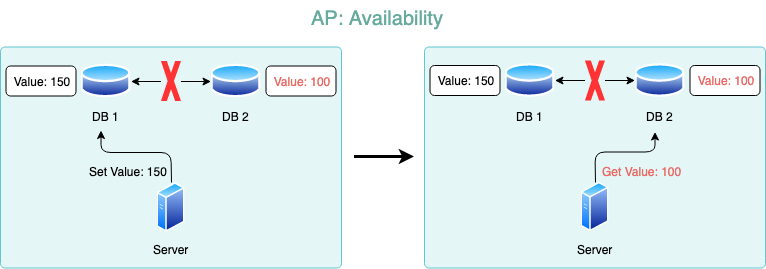
Be careful
- CAP uses very narrow definitions
- **強一致性(strong consistency)**vs. 最終一致性(eventually consistency)
- another concept of database: BASE
- Basic Availability
- Soft-state
- Eventual consistency
- CP/AP: a false dichotomy
- A huge amount of subtlety is lost by putting a system in one of two buckets
- fault-tolerance, latency, simplicity of programming model, operability ...
- A huge amount of subtlety is lost by putting a system in one of two buckets
- CAP uses very narrow definitions
Reference
- Scalability
- Partition & Replication
What is Database Replication and How Does it Work?
Partitioned Tables and Indexes
- CAP
- 用了很多它的圖,但還沒看完